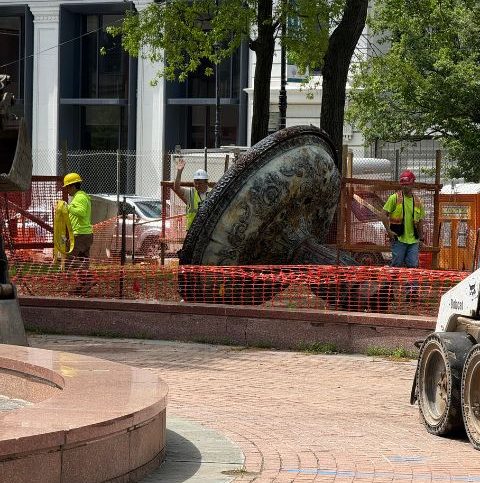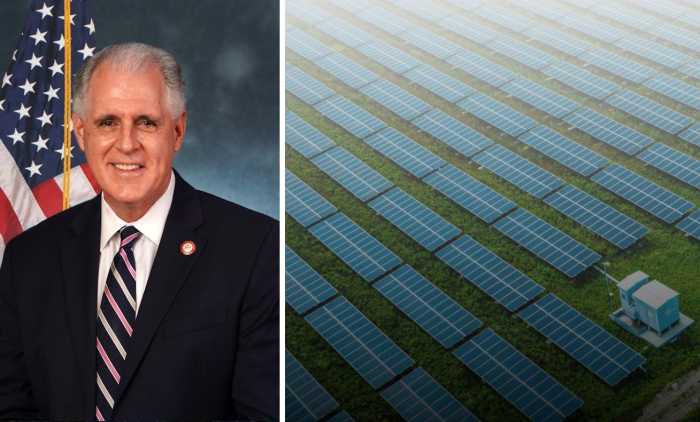Eco-Friendly Spray System Now In Glendale
Designed to save water while continuing to keep children cool during the summer heat, retrofitted spray showers were unveiled by the Parks Department and the Department of Environmental Protection (DEP) at a press conference at Glendale’s Vito Maranzano Playground last Thursday, Aug. 9.

Indeed, a group of youngsters from Rego Park’s Lost Battalion Hall Recreation Center frolicked under the playground’s sprinklers as DEP Commissioner Carter Strickland and Parks Commissioner Adrian Benepe announced to members of the media the installation of timers and activation buttons on the showers as part of the “Water for the Future” program.
The $2.1 billion initiative aims to cut the city’s water consumption by five percent, and Strickland stated that retrofitting spray showers at public parks would help conserve millions of gallons of water every year.
Generally, each spray shower at a public park uses 7,000 gallons of water each day, but the new conservation devices on the sprinklers will cut that number by 80 percent, Strickland noted.

The activation buttons are located away from the shower and can be pushed by children who want to use it. Once pressed, water will stream down out of the showers for approximately two minutes, then automatically turn off once the time has expired.
“It’s a lot of fun” for the children, Strickland observed. “Every two minutes, someone has to go over to squeeze” the button if they want to use the spray shower.
Maranzano (a.k.a. Glendale) Playground, located on Central Avenue between 70th and 71st streets, was one the first receive the activation of to buttons and timers; the Parks Department will install them at 23 additional playgrounds during the 2013 fiscal year. By 2017, spray showers at over 400 playgrounds throughout the five boroughs will be retrofitted under the program, the DEP commissioner added, saving the city 1.5 million gallons of water a day.
“By retrofitting spray showers at playgrounds throughout the five boroughs, we will improve sewer capacity and reduce waste,” Strickland said.
Parks Department crews installed the timers and activation buttons at the playground, and they will be tasked to do the same at the other playgrounds across the city with sprinklers, Benepe noted.
“We’re going to save hundreds of millions of gallons of water,” he said. “This is a way to make a cleaner, greener and healthier city and save a lot of money,” noting that the conservation devices will also reduce energy costs for the spray showers’ operation.
Reportedly, the timed spray showers were conceived through the city’s Municipal Water Efficiency Program, which was described by the DEP as “an interagency partnership to implement water conservation strategies at city-owned properties and facilities, and are being funded by the DEP.”
The retrofitting of spray showers in public playgrounds will cost $6 million over a seven-year period, the DEP noted.
Along with reducing the city’s use of water, Strickland noted that the conservation efforts will also ease the impact of the reconstruction of the Delaware Aqueduct, one of the underground tunnels which brings water from upstate reservoirs to the city. He pointed out that the project, which began in the upstate town of Wappingers, will require periodic shutdowns of the tunnel; water will continue to be delivered to the city through the other pipelines.
It is expected that the reconstruction project will be completed by 2021.
































